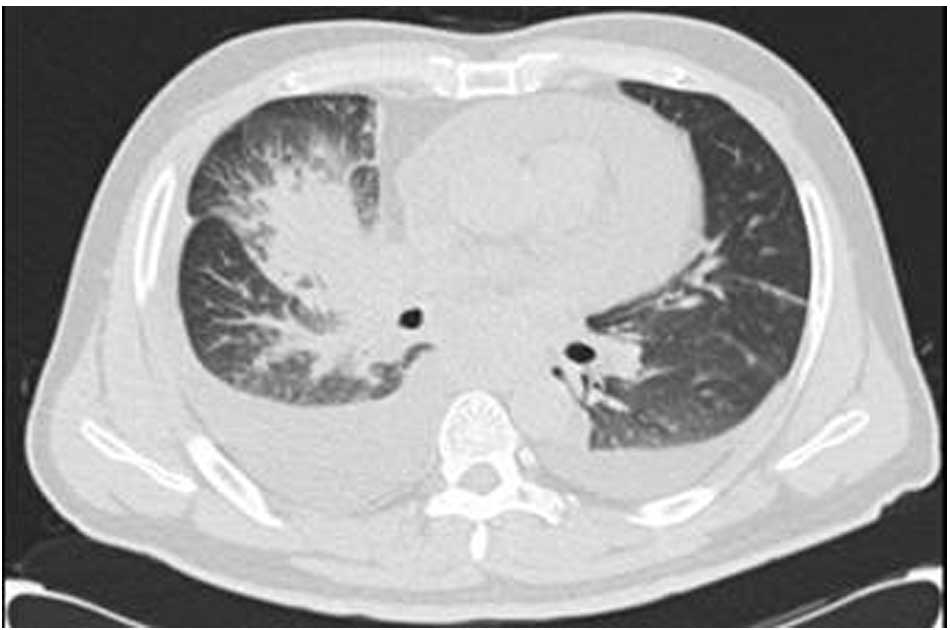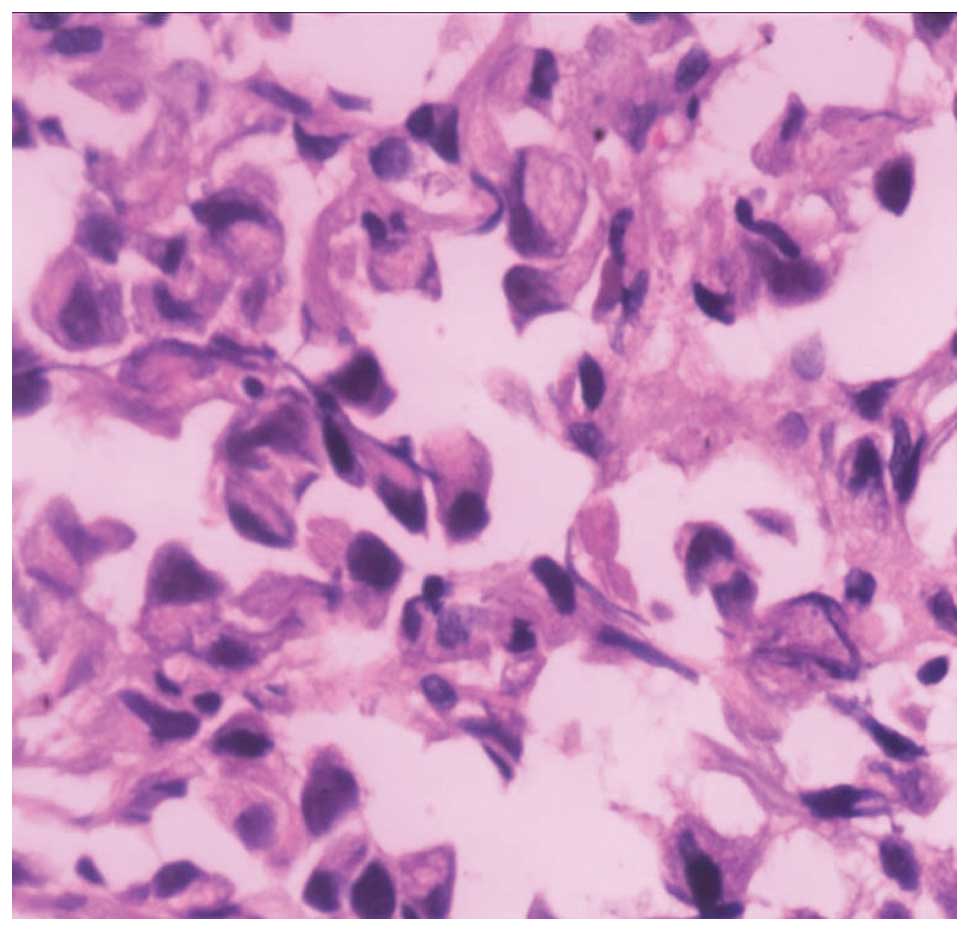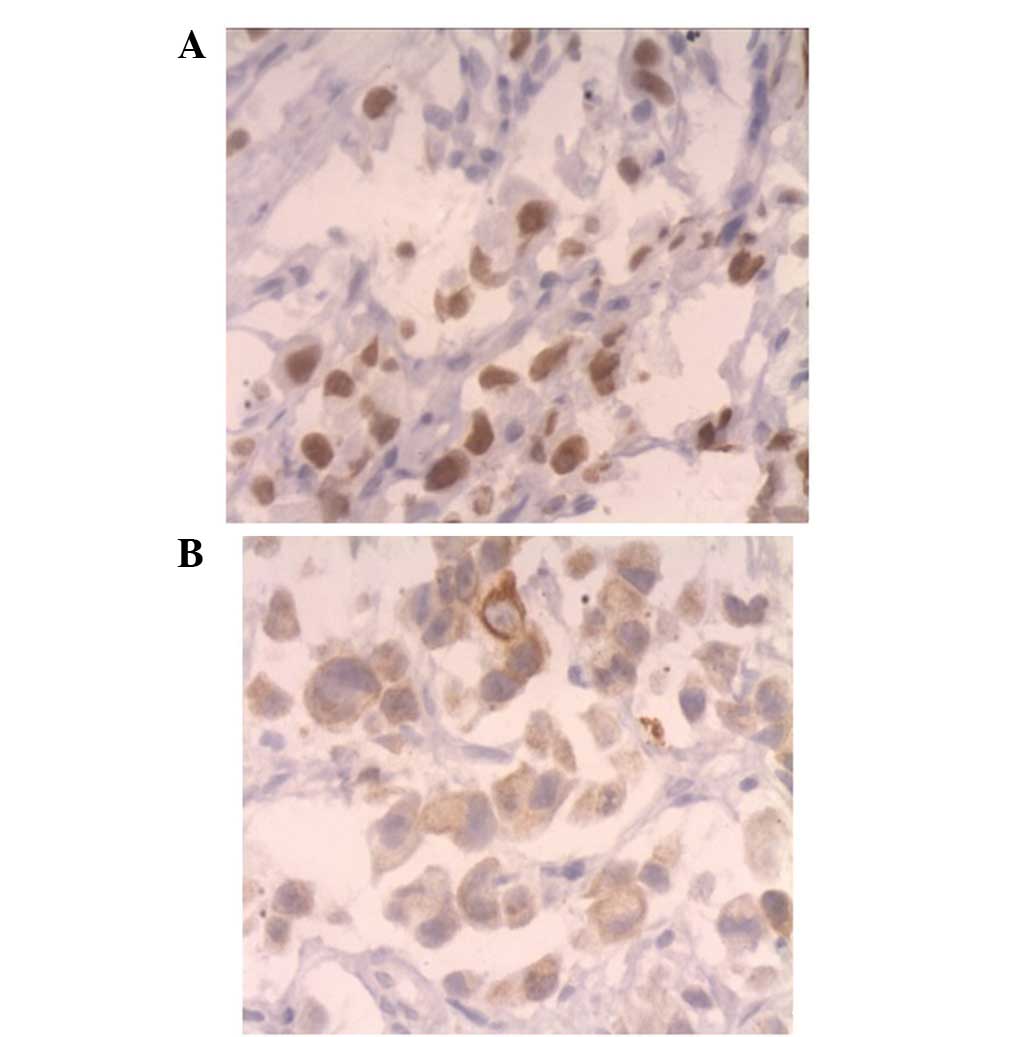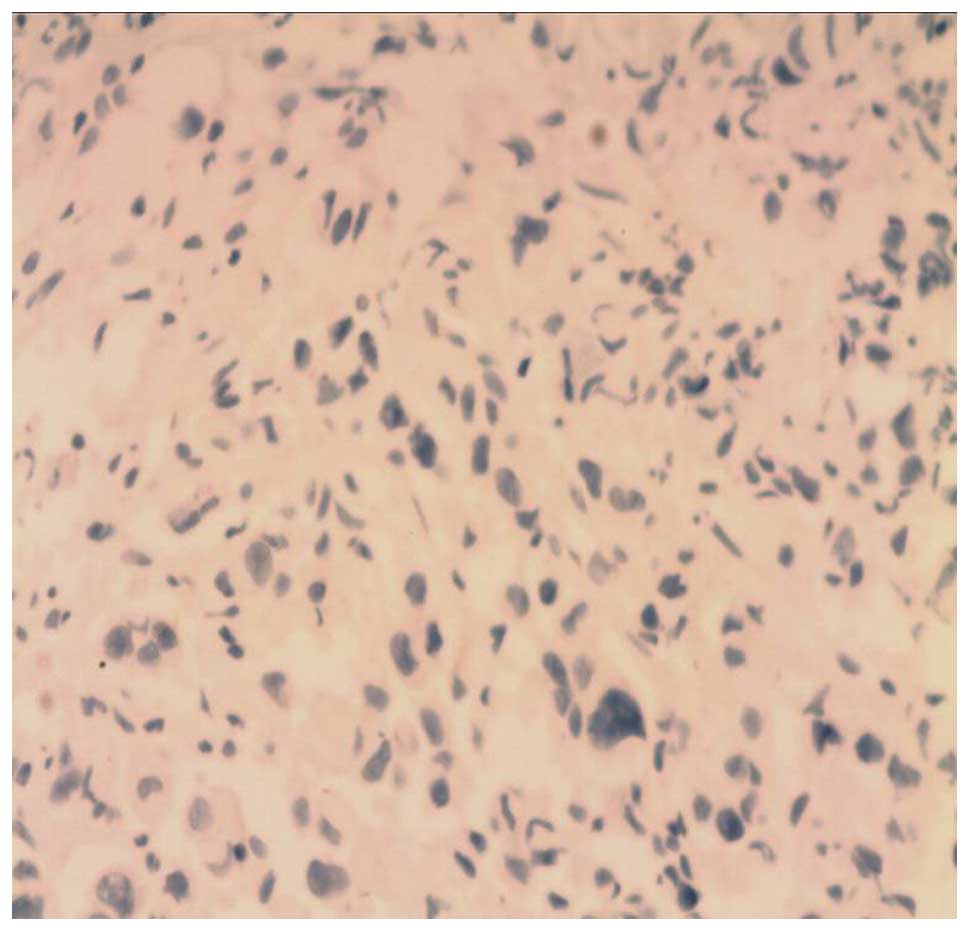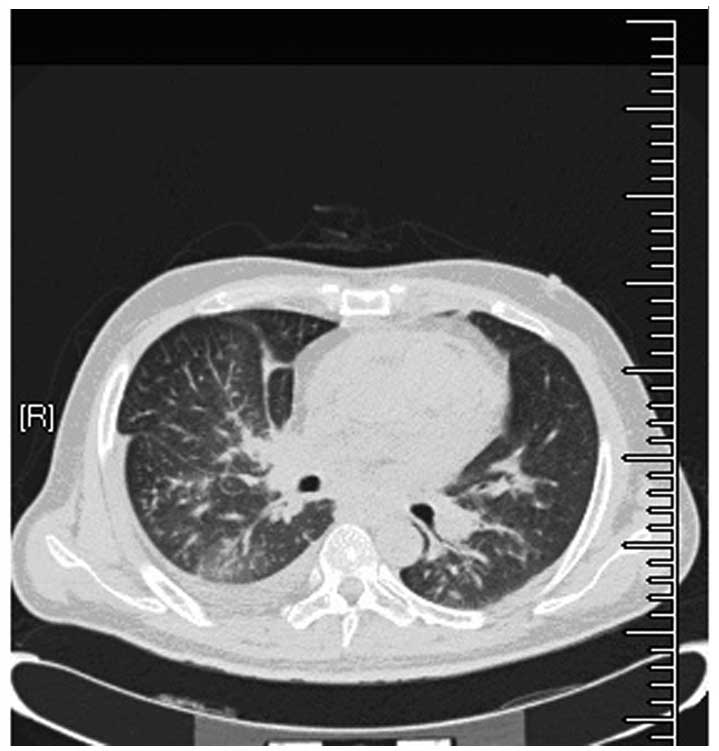|
1
|
Kish JK, Ro JY, Ayala AG and McMurtrey MJ:
Primary mucinous adenocarcinoma of the lung with signet-ring cells:
a histochemical comparison with signet-ring cell carcinomas of
other sites. Hum Pathol. 20:1097–1102. 1989. View Article : Google Scholar : PubMed/NCBI
|
|
2
|
Iwasaki T, Ohta M, Lefor AT and Kawahara
K: Signet-ring cell carcinoma component in primary lung
adenocarcinoma: potential prognostic factor. Histopathology.
52:639–640. 2008. View Article : Google Scholar : PubMed/NCBI
|
|
3
|
Shaw AT, Yeap BY, Mino-Kenudson M,
Digumarthy SR, Costa DB, Heist RS, Solomon B, Stubbs H, Admane S,
McDermott U, Settleman J, Kobayashi S, Mark EJ, Rodig SJ, Chirieac
LR, Kwak EL, Lynch TJ and Iafrate AJ: Clinical features and outcome
of patients with non-small-cell lung cancer who harbor EML4-ALK. J
Clin Oncol. 27:4247–4253. 2009. View Article : Google Scholar : PubMed/NCBI
|
|
4
|
Rodig SJ, Mino-Kenudson M, Dacic S, Yeap
BY, Shaw A, Barletta JA, Stubbs H, Law K, Lindeman N, Mark E, Janne
PA, Lynch T, Johnson BE, Iafrate AJ and Chirieac LR: Unique
clinicopathologic features characterize ALK-rearranged lung
adenocarcinoma in the western population. Clin Cancer Res.
15:5216–5223. 2009. View Article : Google Scholar : PubMed/NCBI
|
|
5
|
Soda M, Choi YL, Enomoto M, et al:
Identification of the transforming EML4-ALK fusion gene in
non-small-cell lung cancer. Nature. 448:561–566. 2007. View Article : Google Scholar : PubMed/NCBI
|
|
6
|
Doebele RC, Pilling AB, Aisner DL, et al:
Mechanisms of resistance to crizotinib in patients with ALK gene
rearranged non-small cell lung cancer. Clin Cancer Res.
18:1472–1482. 2012. View Article : Google Scholar : PubMed/NCBI
|
|
7
|
Kwak EL, Camidge DR, Clark J, et al:
Clinical activity observed in a phase I dose escalation trial of an
oral c-met and ALK inhibitor, PF-02341066. J Clin Oncol.
27:(Suppl). 35092009.
|
|
8
|
Kwak EL, Bang YJ, Camidge DR, Shaw AT,
Solomon B, Maki RG, Ou SH, Dezube BJ, Jӓnne PA, Costa DB,
Varella-Garcia M, Kim WH, Lynch TJ, Fidias P, Stubbs H, Engelman
JA, Sequist LV, Tan W, Gandhi L, Mino-Kenudson M, Wei GC, Shreeve
SM, Ratain MJ, Settleman J, Christensen JG, Haber DA, Wilner K,
Salgia R, Shapiro GI, Clark JW and Iafrate AJ: Anaplastic lymphoma
kinase inhibition in non-small-cell lung cancer. N Engl J Med.
363:1693–1703. 2010. View Article : Google Scholar : PubMed/NCBI
|
|
9
|
Tsuta K, Ishii G, Yoh K, Nitadori J,
Hasebe T, Nishiwaki Y, Endoh Y, Kodama T, Nagai K and Ochiai A:
Primary lung carcinoma with signet-ring cell carcinoma components:
clinicopathological analysis of 39 cases. Am J Surg Pathol.
28:868–874. 2004. View Article : Google Scholar : PubMed/NCBI
|
|
10
|
Ou SH, Ziogas A and Zell JA: Primary
signet-ring carcinoma (SRC) of the lung: a population-based
epidemiologic study of 262 cases with comparison to adenocarcinoma
of the lung. J Thorac Oncol. 5:420–427. 2010. View Article : Google Scholar : PubMed/NCBI
|
|
11
|
Girard N: Crizotinib in ALK-positive lung
cancer. Lancet Oncol. 13:962–963. 2012. View Article : Google Scholar : PubMed/NCBI
|
|
12
|
Bang YJ: Treatment of ALK-positive
non-small cell lung cancer. Arch Pathol Lab Med. 136:1201–1204.
2012. View Article : Google Scholar : PubMed/NCBI
|
|
13
|
Tanizaki J, Okamoto I, Okabe T, Sakai K,
Tanaka K, Hayashi H, Kaneda H, Takezawa K, Kuwata K, Yamaguchi H,
et al: Activation of HER family signaling as a mechanism of
acquired resistance to ALK inhibitors in EML4-ALK-positive
non-small cell lung cancer. Clin Cancer Res. 18:6219–6226. 2012.
View Article : Google Scholar : PubMed/NCBI
|















